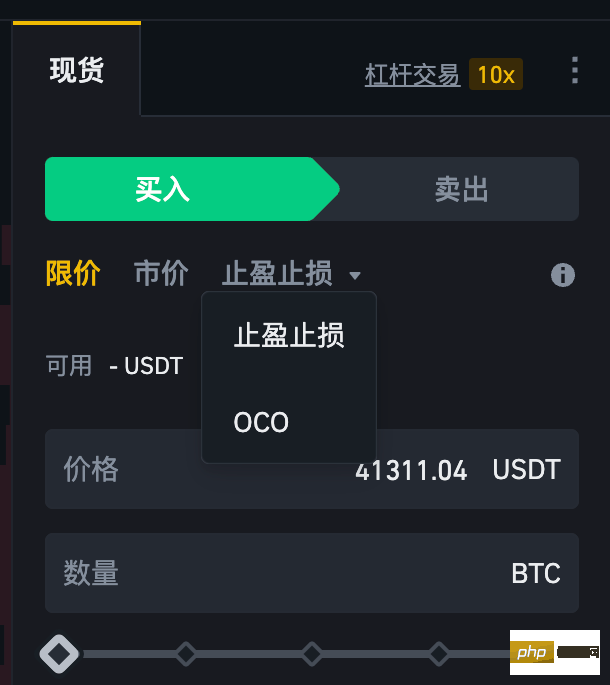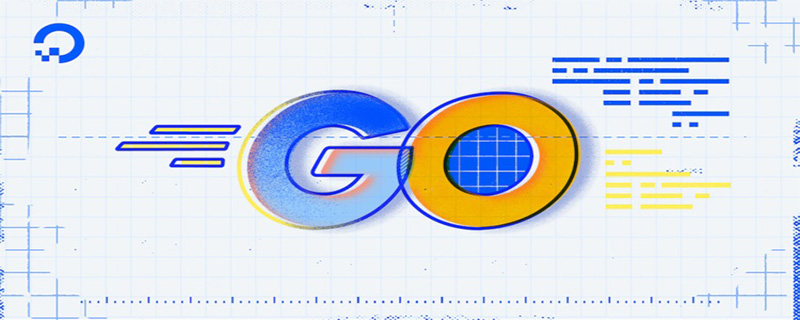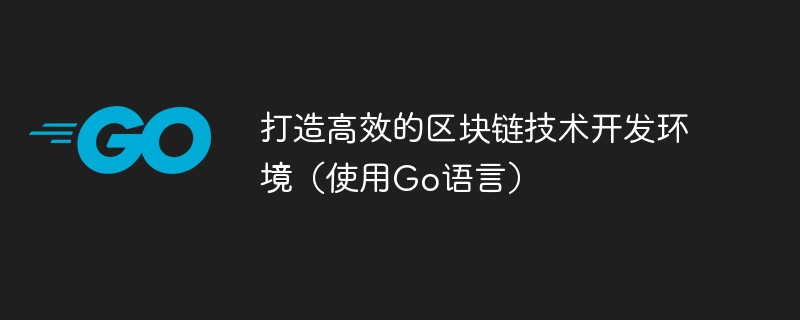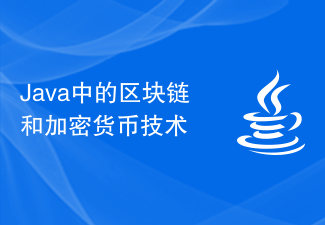 web3.0
web3.0 Taking Rollup technology as the core, opening a new chapter in the development of BTC Layer 2
Taking Rollup technology as the core, opening a new chapter in the development of BTC Layer 2Bitcoin expansion route ≠ BTC L2.
At the beginning of the new year, the technical route of BTC L2 is summarized. It is mainly divided into two parts: the security and value upside of BTC, and the downside of L2 transaction execution and results. With the development of time, in less than three months, BTC L2 has reached the order of magnitude of nearly a hundred, but there are still some basic issues that have yet to be clarified, and the identification of issues is the first to bear the brunt.
In the history of Bitcoin development, there have been three practices for the expansion route for a long time. The lowest level is the main network upgrade, such as SegWit and Taproot, followed by off-chain expansion, such as client verification, lightning network, side chain and many other attempts. Finally, there are direct forks, such as Dogecoin, BSV, BCH, etc. These different practices respond to various challenges of the Bitcoin network in different ways.
<img src="/static/imghwm/default1.png" data-src="https://img.php.cn/upload/article/000/887/227/171257299745126.png?x-oss-process=image/resize,p_40" class="lazy" alt="以Rollup技术为核心,开启BTC Layer 2发展新篇章">比特币扩容路线选择
From the inside out, it is complicated. There are different opinions on what exactly BTC L2 is. Referring to the development history of Ethereum, I hereby put forward two key points of evaluation:
- L2 must first be It is a chain, capable of independently completing all aspects of calculations and transactions, and finally submitting Bitcoin for settlement;
- The security of L2 is completely guaranteed by L1, the underlying value of L2 is supported by BTC, and L2 tokens cannot interfere Functionality of BTC comes into play.
According to this standard, mainnet upgrades and forks have nothing to do with the L2 concept. The focus is on how to classify off-chain expansion paths. For example, the Lightning Network is a special "channel" and can hardly be called a public chain in itself. The side chain has its own security consensus and operation mode, and its security cannot be strictly equivalent to that of Bitcoin, but L2 should be hidden in it, then Let’s continue dividing.
BTC L2 = Lightning Network side chain.
Referring to the previous standards, BTC L2 should be a hybrid product of the Osaka Network and the side chain, that is, it is completely dependent on the Bitcoin main network like the Osaka Network, and at the same time "independent" like the side chain Bitcoin operates by taking the best of both and discarding the dross of both.
The current BTC L2 solution needs further development, especially considering that BTC’s UTXO mechanism and Layer 2’s smart contract mechanism cannot operate strictly together. Since Bitcoin cannot reverse past transactions, L2 needs to solve it on its own or introduce an off-chain update or indexing mechanism.
L2 has the problem of being too independent. It only stores the block header information of the Bitcoin transaction as a synchronization proof of L2 to L1, and only stores the calculation information in the block header of the Bitcoin blockchain. It is considered It is a DA solution and does not consider the subsequent retrieval and confirmation issues at all.
The current situation of BTC L2 is very easy to fish in troubled waters, leading to a security and trust crisis. I believe that we must transition from L2 as the center to a new stage with Rollup as the center, that is, fully utilizing the security of the Bitcoin main network. Solve large-scale computing problems simultaneously.
BTC L2 ≠ Rollup.
- BTC builds a PoS system to provide security and uses a permissionless access and destruction mechanism, which is different from the existing package asset system.
- BTC pledge income completely uses BTC as the pricing currency, and the project token cannot have a functional conflict with BTC.
- Rollup The computing layer needs to meet both large-scale and privacy requirements, and uses encryption technology to combat centralization tendencies.
- Rollup cannot build additional DA layers and strictly uses Bitcoin as a DA solution.
To summarize, the ideal Rollup should use BTC as the native Gas Fee and pledge reward, use the 2WP double-peg mechanism to achieve cross-chain circulation, and the 1:1 anchored mapped asset xBTC circulates in BTC L2 and cross-L2 bridges, ZK proof of privacy calculation, can ensure the complete anonymity and privacy of Bitcoin users from the source and process. The project tokens participate in Rollup operations to avoid role conflicts with BTC.
Rollup is like a bridge, like a chain, and like L2
<img src="/static/imghwm/default1.png" data-src="https://img.php.cn/upload/article/000/887/227/171257299741302.png?x-oss-process=image/resize,p_40" class="lazy" alt="以Rollup技术为核心,开启BTC Layer 2发展新篇章">BTC Rollup 运作流程
First of all, we must emancipate our minds. The bottom layer of PoW and the upper layer of PoS are the current optimal solutions. The source of staking income depends on the underlying value support, and engineering portfolio replaces technology. In innovation, it doesn’t make much sense to care about ZK or OP. The result is that storage is not DA. In addition, there is no need to worry too much about the mechanism design of centralization and decentralization. No solution can be compared with Bitcoin, even ETH OP, with real fault proof and recovery The mechanism is also a "route" or "theoretical" and will still be controlled by the project party currently or in the long term.
Therefore, a more reasonable mechanism design lies in how to reduce human intervention through technical means and ensure the long-term stable operation of the project. In ETH L2, it is called forced withdrawal and escape cabin design to ensure that the project is shut down in extreme circumstances. It can also ensure the security of user funds. For BTC Rollup, the difficulty here is how to return the mapped assets to the Bitcoin main network in the event of a failure, and how to ensure privacy during Rollup calculations, when it was not so decentralized in the early days.
Let’s first discuss the first point. BTC’s mapped assets, such as various decentralized versions of WBTC, must ensure security while circulating on Rollup. On the one hand, only the entry of BTC can support the value of Rollup. On the other hand, the value of Rollup must be supported by the entry of BTC. On the one hand, Rollup BTC must be able to be transferred back to the mainnet in the event of a failure.
The existing solutions are basically various variants of cross-chain bridges. The only difference lies in whether they are communication bridges, asset bridges or centralized bridges. At present, it is basically difficult to find new solutions. solution, bridging assets is the first step in building a PoS system.
不过质押和质押收益还有创新空间,比如可以跳过 Lido 的发展阶段,直接使用 DVT 技术来搭建完整的去中心化质押体系,或者基于 BTC、WBTC 或者 BounceBit 发行的,基于交易所体系衍生出的再质押 BTC 搭建混合质押体系,以降低对危机时对 BTC 的安全冲击。
桥接和 DVT/混合质押之后,Rollup 的计算长期被人忽视,这里面的问题在于,Rollup 自己要能承担公链的数据吞吐、状态更新和结果存储,以及数据分发四个阶段或部分,可以分成两点去讨论,其一是效率,其二是隐私。
- 效率容易理解,比如使用并行机制或并发机制,在度过早期的 FOMO 情绪后,比特币 Rollup 要和 ETH Rollup 比拼运行效率,而提速已经被 Solana 证明真的管用。
- 隐私问题长期被人忽视,比特币的 PoW 机制导致其几乎无法被审查,但是 Rollup 在早期阶段,极易受到 ETH PoS 后的窘境,即某类节点遭受和迎合审查机制,这里的解决方案无法通过去中心化机制设计来实现,任何方案都无法和 BTC PoW 相提并论,必须寻求隐私计算的帮助。
最后是 DA 问题,也就是参考 ETH L2 和 Rollup 分野的评判标准,不使用主网作为 DA 方案的无法被称之为 Rollup,这涉及到最终的安全承诺,如果 L2/Rollup 主动放弃 L1 的安全保障,那么自然就该被剔除出去,由于 BTC 的独立机制,所以需要额外的补充设计。
<img src="/static/imghwm/default1.png" data-src="https://img.php.cn/upload/article/000/887/227/171257299849860.png?x-oss-process=image/resize,p_40" class="lazy" alt="以Rollup技术为核心,开启BTC Layer 2发展新篇章">DA 机制
- 乐观验证和 ZK 混合使用成为主流,指的是 Rollup 上的交易最终由主网进行确认,欺诈证明使用乐观机制,即先确认,后排障,时间满,即生效,而在证明生成上,可以使用 ZK 来大幅压缩数据,这一点在 BTC Rollup 上尤为重要,原因无他,比特币空间过于昂贵。
- 铭文机制可在交易机制上发挥更大作用,在 ETH Rollup 上,欺诈证明一旦被挑战,并被以太坊所接受,主网会罚没提交者的质押资产,但是在 BTC Rollup 上,这种罚没必须在链外进行,因为比特币的脚本一旦被写入,则无法再次被更改,只能通过继续在新区块写入信息的形式完成更新,即只能 Update(更新),无法 Overwrite(覆写)。
索引器网络实际上要承担交易更新的重任,必须被去中心化。
最终,我们可以完成整个 BTC Rollup 的机制设计,可以分为四步走,基本上都会沿着 xBTC--->质押--->计算---->DA 四步去搭建技术架构,这里的难点主要在于质押系统和映射资产的设计原则,以及链上计算的隐私问题和最终的 DA 设计。
此外,遵循项目代币不能和 BTC 发生冲突的原则,项目代币应该在 Rollup 之内发挥作用,比如 DVT 体系的搭建,索引器的去中心化维护,以及生态发展和治理体系上流转。
大图景:BTC L2 横评纵论
<img src="/static/imghwm/default1.png" data-src="https://img.php.cn/upload/article/000/887/227/171257299869657.png?x-oss-process=image/resize,p_40" class="lazy" alt="以Rollup技术为核心,开启BTC Layer 2发展新篇章">架构说明
如果以我划定的 Rollup 为标准,那么显然诸多项目方案无法被纳入讨论,因此将范围放宽,具备上述特征的都可被直观评述。
按照四步走的顺序,可以稍微比较一下目前主流的技术方案,需要注意的是,每一步都是环环相扣的,但是会默认前提已经存在不再赘述,比如桥接的下一步是质押,那么在论述质押时就不会再强调桥接的实现方式,依次递进。
从桥接资产出发,ZetaChain 和 Zeus Network 最符合标准,分别沟通比特币和 EVM 生态以及 Solana 生态,在具体实现上,二者略微有所区别。
ZetaChain 创造了和 ERC-20 类似的 ZRC-20 标准,BTC 可以 1:1 映射发行 zBTC 代币,同时,为突出全链 Omni 概念,zBTC 实际上存在内部兑换机制,不会实际传输到目标链之上,由此将 zBTC 变为所谓的全链资产,不过这种映射资产需要很强的机制设计,ZetaChian 通过使用观察者(observers)和签署者(signers)来监控比特币链上的交易和事件,并在 ZetaChain 上达成共识,从而实现与比特币等非智能合约区块链的交互。
理论上而言,ZetaChain 是全链跨链桥,不止于能沟通比特币和 EVM 生态,但是这里的重点是说明比特币等非智能合约公链如何接入 EVM 的过程,可以发现,ZetaChain 不仅是消息桥,同时也是资产桥。
而 Zeus Network 则强调自身是通信层而非跨链桥,在其机制设计上,它提供了一个标准化的接口,使得不同的区块链可以通过这个接口进行信息和价值的交换。
比如可以将 BTC 锁定在一个特定的比特币地址上,并在 Solana 上释放等值资产,而需要实际转移 BTC,并且在 Solana 进行智能合约操作,可以改变比特币网络上的行为。
It can be found that this is more like a word game. In theory, there is no need to transfer assets between the two chains, but in fact, you cannot really transfer BTC to the Solana network. Bridging assets or Information essentially requires the introduction of a third party to call and communicate with each other. The only difference lies in the degree of involvement.
When assets are bridged, a pledge system will appear. The significance of pledge is to imitate the security commitment of the ETH network, such as Stake, LSDFI, Restake and LRTFi. The fundamental logic is that pledge ensures the security of the main network. , issue equivalent certificates to participate in DeFi and earn income. The difference lies in the degree of "matryoshka".
In the practice of Bitcoin, Merlin Chain is the representative of the pledge system, and BounceBit is the representative of LRTfi, but the core is to attract users to keep their assets in their own system, not just to earn interest by depositing coins. Instead, we hope to try our best to expand the boundaries of the ecology while preserving security, and the era of usability is gradually coming.
In addition to violent pullbacks, Merlin Chain is committed to ecological development in terms of mechanism. Based on the L1 BTC multi-signature and L2 smart contract systems, it has built usage scenarios on L2, such as Merlin Swap, Merlin Starter and many other Ecology is the most trouble-making among the current Layer 2. It and ETH L2 ZKFair come from the same school and are both products of Lumoz. It cooperates with Cobo to build an L2 asset management system. The current TVL is 3.6 billion US dollars, which is basically the highest. First gear.
And BounceBit goes one step further, or one step further.
The progress is that BounceBit produces re-pledged assets based on the exchange. Users directly deposit BTC on Binance and exchange it for package assets on BNB Chain, and can participate in CeFi and DeFi trading activities. Furthermore, Using custody technology, BounceBit can issue LRTfi assets while keeping Bitcoin, and then build an EVM-compatible system that can connect to the world on the chain.
In the entire network operation, CEX and custody are the basis of operation, and the uniqueness of BounceBit is to re-issue the locked BTC in a liquid manner and put it into the logic of asset appreciation. The current TVL is 700 million US dollars. And you can deposit BTC or your own tokens into the pledge network. The overall idea is to use more centralized measures to reduce the risk of BTC operation.
A further step is that this is a slightly improved version of WBTC. Even without long-term operation, its security may not be as good as that of WBTC.
The next step is the on-chain computing link. Two issues need to be solved here. One is the decentralization of the sorter and the sorter, and the second is the issue of compatibility and computing efficiency.
The centralization of the sorter is a chronic problem on ETH L2. The root cause is that using a centralized sorter can greatly improve the operational efficiency of L2 and prevent MEV attacks to a considerable extent. It also helps In addition to these benefits of improving users' trading experience, there are serious centralization issues that will cause the project party to become the de facto operating entity.
B² Network is trying to use its own BSQ mainnet token to build a decentralized sorter network. In fact, it is equivalent to building an incentive network, which needs to combine submitters, provers, challengers and more. roles to maintain operations, that is, using the complexity of governance to reduce the degree of centralization.
In terms of compatibility, the compatibility of EVM or SVM is easy to solve, but the cross-chain between L2 will be more complicated, and computing efficiency requires the introduction of parallel or concurrency methods on a large scale. Currently, there is no special Obvious practical projects.
The other is the privacy protection of on-chain computing. Although there are currently plans to use ZK-Rollup, it is mainly used to compress data. It mostly occurs in DA data release, specifically for privacy protection in the computing process. There are no obvious projects in the program yet.
Finally, there is DA’s data release method, which needs to be discussed in conjunction with the ZK mechanism. Unlike ETH L2, BTC L2 uses ZK mainly to compress data, such as Bitlayer.
Bitlayer uses an optimistic verification mechanism to reduce complexity in execution, uses ZK to compress data, and writes data through an inscription-like situation. Specifically, transaction batches are assumed to be valid by default unless proven otherwise. This way, transactions can be quickly processed off-chain and submitted to the Bitcoin network in a compressed format, reducing data load and cost. If fraud is discovered, participants can initiate challenges, trigger state rollbacks and punish malicious actors to ensure system security.
But how to construct state rollback based on Bitcoin may not be that simple, and it still requires long-term exploration.
Conclusion
Starting from the Bitcoin expansion plan, try to outline what the Bitcoin version centered on Rollup should look like. The core is to ensure that the value and security performance of BTC are migrated to Rollup. , and needs to be distinguished from existing wrapped asset solutions. In terms of specific implementation, solutions based on bridging assets and pledge systems have become a common choice. However, there are still questions on how to ensure decentralization and play the role of BTC and mainnet tokens. In the twilight zone.
However, the Rollup-centered route is still the most complete. Compared with UTXO-based mechanisms or client-side verification solutions, they are more mature. In the intermediate on-chain links, privacy calculations and sorters are decentralized. These are two key points. In the final DA, the inscription has provided a relatively mature reference idea. The only difficulty is the cost issue.
The above is the detailed content of Taking Rollup technology as the core, opening a new chapter in the development of BTC Layer 2. For more information, please follow other related articles on the PHP Chinese website!
 区块链只能用go语言吗Dec 27, 2022 pm 05:25 PM
区块链只能用go语言吗Dec 27, 2022 pm 05:25 PM不是。区块链是一种编程思想,原则上使用任何一种编程语言都可以实现,比如Solidity、C++、C#、Java、javascript、Go都可以实现区块链的开发;区块链技术涉及的面很广,而编程语言只是一种手段,把设计理念用代码呈现出来,做成产品服务用户。
 什么是OCO订单?Apr 25, 2023 am 11:26 AM
什么是OCO订单?Apr 25, 2023 am 11:26 AM二选一订单(OneCancelstheOther,简称OCO)可让您同时下达两个订单。它结合了限价单和限价止损单,但只能执行其中一个。换句话说,只要其中的限价单被部分或全部成交、止盈止损单被触发,另一个订单将自动取消。请注意,取消其中一个订单也会同时取消另一个订单。在币安交易平台进行交易时,您可以将二选一订单作为交易自动化的基本形式。这个功能可让您选择同时下达两个限价单,从而有助于止盈和最大程度减少潜在损失。如何使用二选一订单?登录您的币安帐户之后,请前往基本交易界面,找到下图所示的交易区域。点
 为什么用go语言写区块链Mar 04, 2021 pm 03:42 PM
为什么用go语言写区块链Mar 04, 2021 pm 03:42 PM原因:1、Go语言具有部署简单、性能优秀、并行执行性能好、良好语言设计、内置大量库、团队牛逼等优势。2、以太坊和超级账本都选择使用Go作为开发语言;这两大超级区块链的影响力很大,不仅在生态中占据了大的坑位,事实上还隐性的制定了区块链的标准。
 go语言能开发区块链吗Jan 03, 2023 pm 01:41 PM
go语言能开发区块链吗Jan 03, 2023 pm 01:41 PM可以开发。区块链是一种编程思想,原则上使用任何一种编程语言都可以实现,比如go语言、Solidity、C++、C#、Java、javascript都可以实现区块链的开发。Go语言是为了解决分布式计算,而区块链是典型的分布式数据存储系统,因此go语言能开发区块链。且Go易学易用,能很好的满足区块链行开发需要的“执行效率高、高并发、跨平台,网络开发要求高”等特点。
 深入学习区块链的Go语言开发框架Jun 04, 2023 pm 08:01 PM
深入学习区块链的Go语言开发框架Jun 04, 2023 pm 08:01 PM区块链技术的出现,使得数字货币的应用成为可能,也在许多领域得到了广泛应用。随着区块链技术领域的扩大,开发人员对于更好的应用程序编写方式的需求也高涨起来。于是,一个叫做Go语言(简称Golang)的编程语言悄悄兴起,成为了区块链开发人员的最爱。Go语言是谷歌公司开发的一种系统级编程语言,自诞生以来,一直着重强调程序设计的简捷和高效。Go语言的优点包括:静态类型
 打造高效的区块链技术开发环境(使用Go语言)Jun 05, 2023 am 08:21 AM
打造高效的区块链技术开发环境(使用Go语言)Jun 05, 2023 am 08:21 AM随着区块链技术的发展和应用越来越广泛,有越来越多的人开始参与到区块链技术的开发中来。而要想打造高效的区块链技术开发环境,选择合适的开发语言和工具是非常重要的。Go语言正是一个很好的选择,因为它的性能很高,同时还有很多优秀的开源工具和库,能够大大提高开发效率。下面就来介绍一下如何打造高效的区块链技术开发环境,使用Go语言进行开发。一、选择Go语言在选择开发语言
 Java 中的区块链和加密货币技术Jun 09, 2023 am 09:56 AM
Java 中的区块链和加密货币技术Jun 09, 2023 am 09:56 AMJava是一种广泛使用的编程语言,它被许多公司和组织用作开发各种应用程序的工具。最近几年来,区块链和加密货币技术在全球范围内引起了大量的关注。Java的灵活性和多功能性使得它成为开发区块链和加密货币应用程序的优秀选择。区块链技术是一种安全的、去中心化的数据库,它可以存储和共享交易记录,而无需任何中央机构的干涉。Java提供了许多区块链开发框架,例如H
 如何利用Go语言实现全球唯一的区块链身份标识Jun 04, 2023 pm 03:51 PM
如何利用Go语言实现全球唯一的区块链身份标识Jun 04, 2023 pm 03:51 PM区块链是一种去中心化的分布式账本技术,随着其应用领域的不断扩展,如何保障区块链参与者的身份安全问题也逐渐成为热门话题。本文将介绍如何利用Go语言实现全球唯一的区块链身份标识。一、为什么需要区块链身份标识在现有的互联网世界中,身份验证是一个非常重要的问题。通过用户名和密码等方式,用户可以登录到我门的网站上,从而使用我们的服务。但是,在互联网上,身份验证存在着

Hot AI Tools

Undresser.AI Undress
AI-powered app for creating realistic nude photos

AI Clothes Remover
Online AI tool for removing clothes from photos.

Undress AI Tool
Undress images for free

Clothoff.io
AI clothes remover

AI Hentai Generator
Generate AI Hentai for free.

Hot Article

Hot Tools

SublimeText3 Mac version
God-level code editing software (SublimeText3)

SAP NetWeaver Server Adapter for Eclipse
Integrate Eclipse with SAP NetWeaver application server.

Atom editor mac version download
The most popular open source editor

mPDF
mPDF is a PHP library that can generate PDF files from UTF-8 encoded HTML. The original author, Ian Back, wrote mPDF to output PDF files "on the fly" from his website and handle different languages. It is slower than original scripts like HTML2FPDF and produces larger files when using Unicode fonts, but supports CSS styles etc. and has a lot of enhancements. Supports almost all languages, including RTL (Arabic and Hebrew) and CJK (Chinese, Japanese and Korean). Supports nested block-level elements (such as P, DIV),

SecLists
SecLists is the ultimate security tester's companion. It is a collection of various types of lists that are frequently used during security assessments, all in one place. SecLists helps make security testing more efficient and productive by conveniently providing all the lists a security tester might need. List types include usernames, passwords, URLs, fuzzing payloads, sensitive data patterns, web shells, and more. The tester can simply pull this repository onto a new test machine and he will have access to every type of list he needs.






